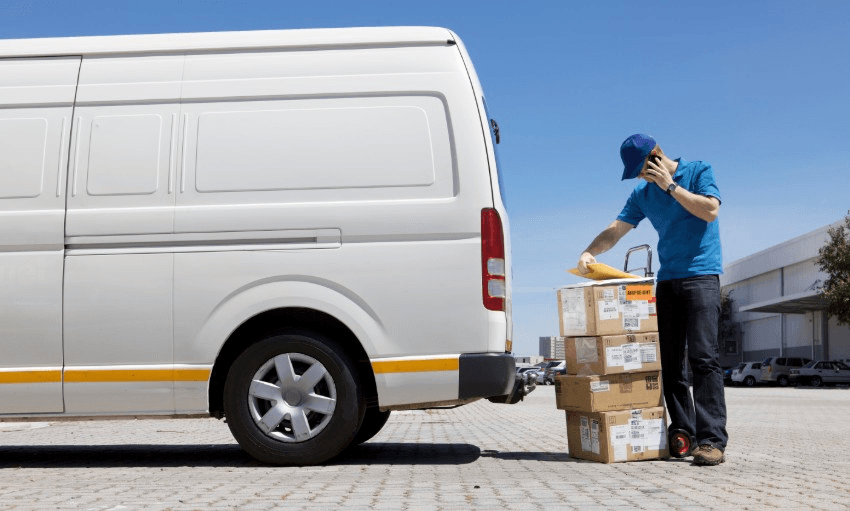A move to level three will see a wave of businesses crank back to life, and the pressure on courier operations will surge further.
Once a week, maybe twice if I’m lucky, a courier driver knocks on my front door. It’s an exciting sound, those three quick taps, and I immediately leap up from my desk and bound toward the door like a golden retriever, eager to experience a face-to-face interaction with a genuine human being.
It’s not much of an exchange. But it’s something. Sometimes they ask for my name, other times they wave. Often I just silently stare through the glass as the driver places the parcel on the porch, steps back and tears up the path to his van to continue what must surely be a manic day delivering essential goods.
Like other essential services, courier companies have come under immense pressure during level four lockdown, having to drastically pivot their operations to allow for safety and physical distancing. Delivery times have understandably suffered for it, leaving some people waiting weeks for the courier to pay them a visit.
On one of my walks I saw a driver parked up, stealing a few minutes for a cigarette while he checked his schedule. I asked him how he was. “It’s been busier than Christmas,” he said, adding that the only consolation in the daily frenzy was the relatively empty roads.
Tomorrow the government will make its decision on a shift to alert level three, which will allow more businesses to open and non-essential goods to be delivered to customers, provided the business involved can maintain health and safety requirements. As more businesses start to reopen their premises and get back to work, the delivery woes are likely to intensify – because they will not be able to physically interact with customers, many businesses will start using contactless courier services to deliver their products, putting even more pressure on courier companies already struggling to meet the demand of essential businesses and services.
Courier companies contacted by The Spinoff said they were unsure what the next few weeks will hold. Post Haste couriers couldn’t say whether delivery times would be affected by the move to level three, but Pace Couriers said that its drivers would be available to deliver urgent local freight, but there might be delays to intercity deliveries due to constraints on domestic flights.
NZ Post confirmed it would have adequate capacity to meet the extra demand, despite confirmation from the call centre that there was a significant backlog.
“Like the rest of the country, we are working through what operating under level three will look like in these unprecedented times,” a spokesperson said. “We anticipate there will be another surge when the country transitions to level three, whenever that may be.
“When there are major and unexpected surges in volume we may not deliver all of it in one go, but because of the preparations we have, and will make, we’ll quickly catch this up and Kiwis will get their items in a timely manner.”
This will exclusively be done via contactless deliveries, which many countries have adopted after China set the trend at the start of its outbreak. Back then reports of companies dropping off goods at specific times and places to avoid human contact seemed bizarre and robotic. Such procedures will become the norm in New Zealand as courier companies innovate and fine-tune their systems to cater for the growing number of businesses delivering directly to their customers.
Aramex NZ (formerly Fastway Couriers) CEO Scott Jenyns said the company had seen a massive shift from businesses-to-business to business-to-customer deliveries, and that it had developed an online portal for its growing customer base.
“We’re really pushing our online easy-to-use self-service delivery product, so customers don’t have to have that point-to-point contact or face-to-face contact,” he said on RNZ.
He said the demand spiked as soon as the government first announced what life under level three would look like. “We’re seeing a huge surge in demand for that product… that surge has been real today with our websites inundated with enquiries.”
Judging from the comments on other courier companies’ Facebook pages, enquiries – and complaints – about delivery delays are pouring in. However, we’re all going to be increasingly dependent on couriers for our goods. The idea of a courier may start to change – rideshare drivers such as Uber are bound to jump into the breach. But like queues at supermarkets, delays are going to become the new normal.

